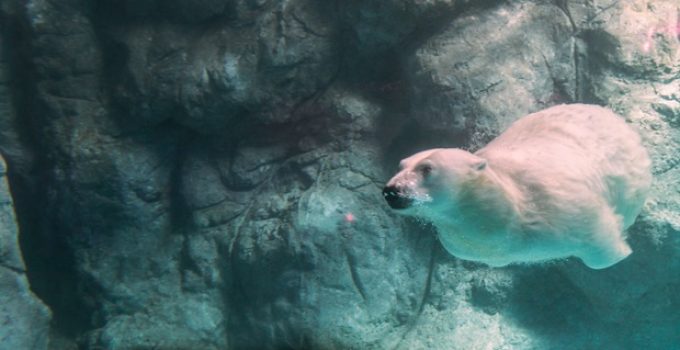Can Bears Swim?
Yes, bears can swim—and many are excellent swimmers. In fact, some bear species, like polar bears, are so well adapted to water that they rely on swimming to hunt and survive. Even black and brown bears, who are primarily land-based, can cross lakes and rivers with surprising endurance and ease. Swimming plays an important role in foraging, travel, and thermoregulation across bear habitats.
Dive Deeper
- Which Bears Swim—and Why
- Swimming Styles and Physical Adaptations
- How Far Can Bears Swim?
- Table: Swimming Abilities by Bear Species
- 🎯 Final Thoughts
- 📚 References
Which Bears Swim—and Why
Most bear species are capable swimmers, but how often they swim depends on habitat and necessity:
- Polar bears (Ursus maritimus) are semi-aquatic, spending much of their life on sea ice and in frigid waters
- Grizzly/brown bears (Ursus arctos) swim across rivers and lakes during migration or to access food
- Black bears (Ursus americanus) are surprisingly agile in water and often swim to escape predators or reach isolated food sources
- Asiatic black bears, sloth bears, and sun bears can also swim, though they do so less frequently
🐾 According to the Tampa Bay Times, an incident off Pensacola Bay recorded a black bear swimming approximately 14 miles.
Swimming Styles and Physical Adaptations
Bears typically use a dog-paddle stroke, keeping their heads above water while propelling with all four limbs. Though bulky on land, their anatomy helps them in water:
- Large, flat paws function like paddles
- Fat reserves provide buoyancy
- Strong muscles power long-distance movement
- Polar bears have partially webbed front paws, ideal for aquatic locomotion
🧬 A study published in Marine Mammal Science noted that polar bears bodies are adapted for swimming in Arctic waters more eficiently with large forepaws, lower and flatter heads, and more dense forelimb bones relative to other bear species.
How Far Can Bears Swim?
The distance bears can swim varies significantly by species:
- Polar bears have been recorded swimming an average of 3.4 days over 96 miles (154.2 km) in a single stretch.
- One female polar bear swam 426 miles (687 km) over 9 days in search of sea ice—a record-breaking journey with significant energy costs.
- Grizzlies and black bears can swim several miles across lakes and wide rivers, though they typically don’t travel as far
📊 A study published in Canadian Journal of Zoology, based on satellite-collar tracking of female polar bears, reports 50 instances of long-distance swims in a six year period by 20 bears, with swim durations averaging 3.4 days, and individual swims lasting as long as 9.7 days—up to nearly 426 miles. The authors link this behavior to fragmented sea ice that leaves large stretches of open water.
Table: Swimming Abilities by Bear Species
| Species | Swimming Skill | Typical Use of Swimming | Record Breaking Distances |
|---|---|---|---|
| Polar Bear | Excellent | Hunting, traveling, survival | 426 miles |
| Grizzly Bear | Very Good | Migration, accessing salmon, escape | 7 Miles |
| Black Bear | Good | Foraging, crossing rivers, predator avoidance | Undocumented |
| Asiatic Black Bear | Moderate | Occasional foraging or movement | Undocumented |
| Sloth/Sun Bears | Adequate | Tropical water crossings if needed | Undocumented |
🎯 Final Thoughts
So, can bears swim? Absolutely—and in some cases, exceptionally well.
- Polar bears are adapted to long-distance swimming and rely on it to hunt and survive
- Grizzlies and black bears swim effectively, using water to travel or escape
- Bears use dog-paddle techniques, leveraging strength and buoyancy
- Swimming ability varies by species, habitat, and necessity
As their habitats change—especially in the Arctic—swimming has become a critical skill for survival, not just mobility. Understanding bear swimming behavior also helps scientists track movement patterns, health, and the impacts of environmental stress.
📚 References
- 📰 Tampa Bay Times. “Black bear takes a long dip in gulf.” https://www.tampabay.com/archive/1997/05/08/black-bear-takes-a-long-dip-in-gulf
- 📝 Fish, Frank E., et al. “Aquatic Adaptations in the Ursidae: Morphological Evidence and Functional Implications.” Integrative and Comparative Biology, vol. 60, no. 5, 2020, pp. 1215–1229. USGS Publications Warehouse, https://pubs.usgs.gov/publication/70203376.
- 📝 Pagano, A. M., Durner, G. M., Amstrup, S. C., et al. (2012). Long‑distance swimming by polar bears (Ursus maritimus) of the southern Beaufort Sea during years of extensive open water, Canadian Journal of Zoology, 90(5), 663–676. DOI: 10.1139/Z2012‑033
- 📰 Daily Inter Lake. “Out for a swim: Grizzly conquers lake.” https://dailyinterlake.com/news/2011/sep/16/out-for-a-swim-grizzly-conquers-lake-6
Related Products
Bears of North America: Black Bears, Brown Bears, and Polar Bears
Get to know black bears, brown bears, and polar bears like never before—through Stan Tekiela’s wildlife photography, personal anecdotes, and years of research.
📌 Learn More About Bears
- Are Bears Nocturnal? 🐻It Depends on Species and Gender
- Are Bears Mammals? 🐻A Wild Look at Our Hairy Cousins
- How Long Do Bears Hibernate? 🐻Why Some Sleep for Months—and Others Don’t What Do Bears Eat? 🐻A Species-by-Species Guide to the Bear Diet
- What Do You Call a Group of Bears? 🐻
- Why the Term Is Rarely Used In Science

